Filippo Brunelleschi was a pioneering Renaissance architect in 15th-century Florence known for buildings like the dome of Florence Cathedral. Andrea Palladio designed many villas and churches in 16th-century Venice and Vicenza, demonstrating harmony and classical styles. Le Corbusier was an influential modernist architect in the 20th century whose designs featured open plans and pilotis columns that lifted buildings off the ground. Antoni Gaudí created an organic Catalan Modernist style in Barcelona with fantastic buildings like Park Güell and the Sagrada Familia church. Other known European architects include Inigo Jones, who introduced the Italian Renaissance style to 17th century England; Rem Koolhaas, known for avant-garde contextual designs with OMA firm; Dominique Perrault, famed for French high-tech modernist museums and cultural centers; Santiago Calatrava acclaimed for neo-futuristic civil projects like train stations and concert halls that resemble natural forms; and Victor Horta the leading Art Nouveau architect in late 19th century Brussels. Contemporary standouts include Spanish architect Santiago Calatrava and Italian Renzo Piano, acclaimed for museum designs filled with natural light. French architect Jean Nouvel is known for boldly modernist contextual buildings, and Dutch architect Rem Koolhaas is celebrated for cerebral, perception-altering designs. Europe’s most famous architectural wonders span from ancient sites like the Acropolis and Colosseum to medieval castles like Neuschwanstein to modernist icons like the Eiffel Tower and Gaudí’s unfinished Sagrada Família basilica. Significant European architectural associations include the European Forum for Architectural Policies, the European Association for Architectural Education, and the European Architectural History Network. Neoclassical architecture has been one of the most famous architectural styles in Europe.
1. Filippo Brunelleschi
Filippo Brunelleschi was a known Italian architect and engineer considered a founding father of the Renaissance architectural style. Filippo Brunelleschi was born in April 1377 in Florence, Italy. He lived his entire life in Florence until his death on April 15, 1446, also in Florence, at 69. Brunelleschi resided and worked exclusively in Florence during the early Renaissance period. All of his essential architectural works can be found in this city. He came from a prominent Florentine family and trained as a goldsmith before turning to architecture.
Brunelleschi was trained as a goldsmith and sculptor through apprenticeships at local Florentine guild workshops in the late 1300s. In 1401-1404, Brunelleschi traveled to Rome to study classical Roman architecture intensely, which would heavily influence his work. When he returned to Florence, he received commissions for sculptures and churches but focused on architectural designs.
Brunelleschi was a pioneering Renaissance architect active in the early 15th century. He designed landmark churches and buildings in Florence, demonstrating mathematical proportions, classical styles, and innovative engineering. Key works include the dome of Florence Cathedral (1420-1436), Basilica of San Lorenzo (1421-1440s), Pazzi Chapel (1441-1460s), and Santo Spirito (1441-1481). His architecture moved away from elaborate Gothic to a more straightforward classical aesthetic.
Filippo Brunelleschi still needs to complete architectural works in the United Kingdom. He lived and worked exclusively in Florence, Italy. His great accomplishment was designing and constructing the enormous dome over Florence Cathedral from 1420-1436, an unprecedented feat of engineering and architecture that established Brunelleschi as a significant figure of the early Italian Renaissance. All of his important architectural works are located in Florence, Italy. These include the dome of Florence Cathedral, Basilica of San Lorenzo, Pazzi Chapel, Santo Spirito Church, Ospedale degli Innocenti, and the churches of Santa Maria degli Angeli and Badia Fiesolana, among other influential early Renaissance buildings.
2. Andrea Palladio
Andrea Palladio was an influential Italian Renaissance architect who designed many villas, palaces, and churches in northern Italy, especially in Venice and Vicenza. Andrea Palladio was born in Padua, Italy, on November 30, 1508. He was trained as a stonemason in Vicenza and worked there for his entire career. Palladio lived in northern Italy, primarily in Vicenza, where he designed many famous buildings. He also completed important projects in Venice. Palladio died in Vicenza on August 19, 1580, at 71.
Palladio published a critical treatise, “The Four Books of Architecture,” that spread his style across Europe and America. He adapted classical elements like columns, pediments, and temple fronts to create a new architectural style that would profoundly influence Western architecture for centuries after his death. Andrea Palladio was born into a humble family and initially trained as a stonemason in Vicenza. In the 1530s, a patron sponsored Palladio’s travels to Rome, where he spent several years studying ancient Roman architecture, measuring ruins, and sketching details.
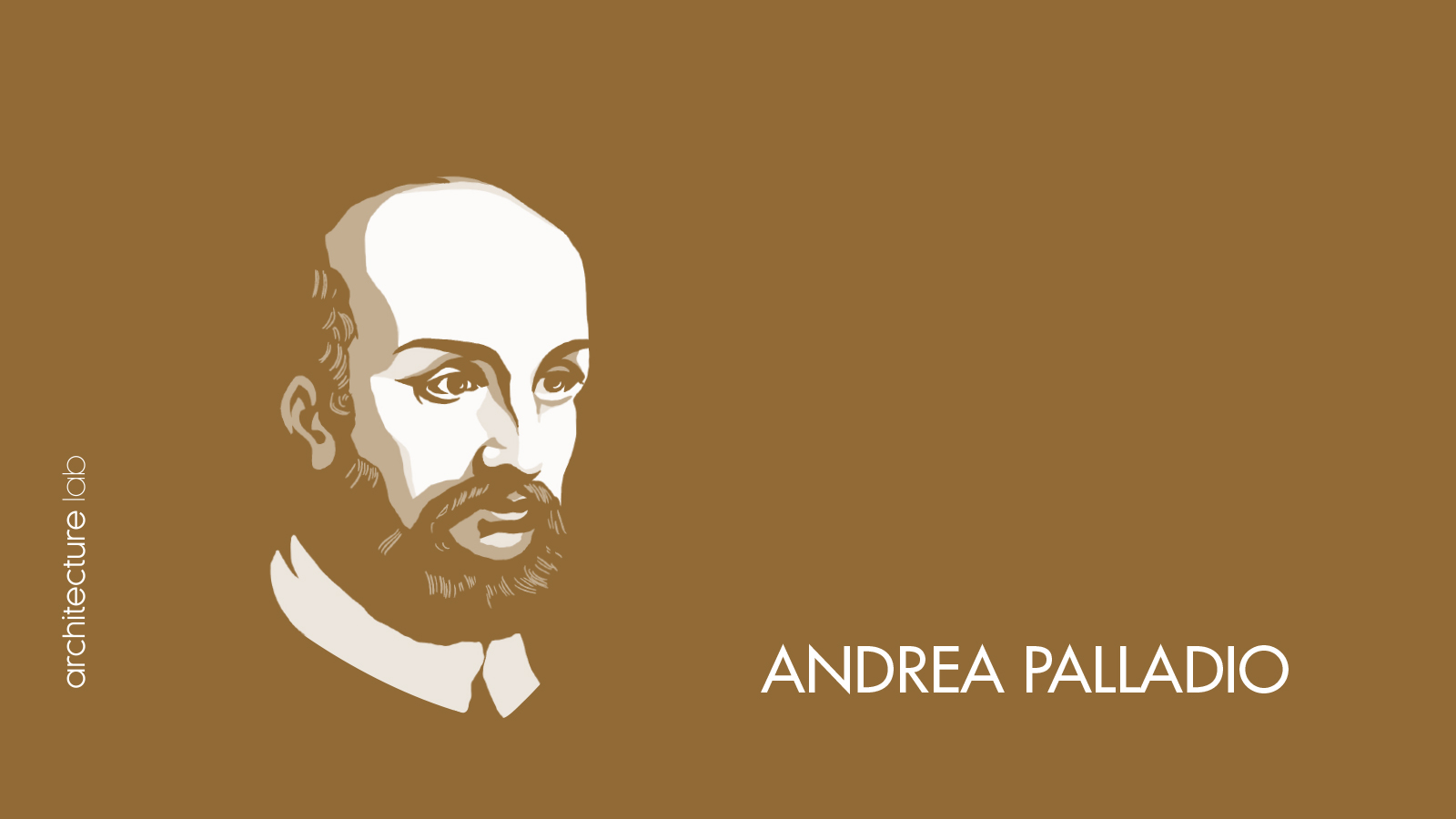
Andrea Palladio’s architectural style represents Renaissance classicism. He adapted ancient Greek and Roman architectural ideas like symmetry, mathematical proportions, and classical orders of columns. This became known as Palladianism and was widely copied by later architects in Europe and America. Andrea Palladio’s most significant European accomplishment was developing an influential architectural style during the Renaissance era. His many villas, palaces, and churches in northern Italy, especially Vicenza and Venice, demonstrated his mastery of classical forms and mathematical harmony. Palladio’s published treatise also spread his style across Europe. The Palladian style profoundly influenced architects in England, Ireland, France, Poland, and Russia in the 17th and 18th centuries.
Some of Andrea Palladio’s most famous buildings in Europe include Villa Rotonda and Villa Capra in Vicenza, San Giorgio Maggiore and Il Redentore churches in Venice, as well as Teatro Olimpico and Basilica Palladiana in Vicenza. These landmark projects feature Palladio’s signature use of temple fronts, arcades, symmetry, and classical proportions that came to characterize Renaissance architecture across Europe.
3. Le Corbusier
Le Corbusier was an influential Swiss-French modernist architect, urban planner, and writer. Le Corbusier was born Charles-Édouard Jeanneret on October 6, 1887 in La Chaux-de-Fonds, Switzerland. He studied art and architecture in La Chaux-de-Fonds before moving to Paris in 1917 and changing his name to Le Corbusier. He resided mainly in France for the rest of his life. After World War II, he designed buildings in Europe, India, and South America. Le Corbusier died on August 27, 1965, at 77, in Roquebrune-Cap-Martin, France.
He pioneered modern architecture and was one of the most significant figures in the International Style movement that emerged in Europe and America in the early 20th century. Le Corbusier’s designs featured open floor plans, large windows, and ‘pilotis’ or columns that lifted buildings off the ground. Le Corbusier’s ideas, writings, and iconic buildings profoundly impacted architecture worldwide.
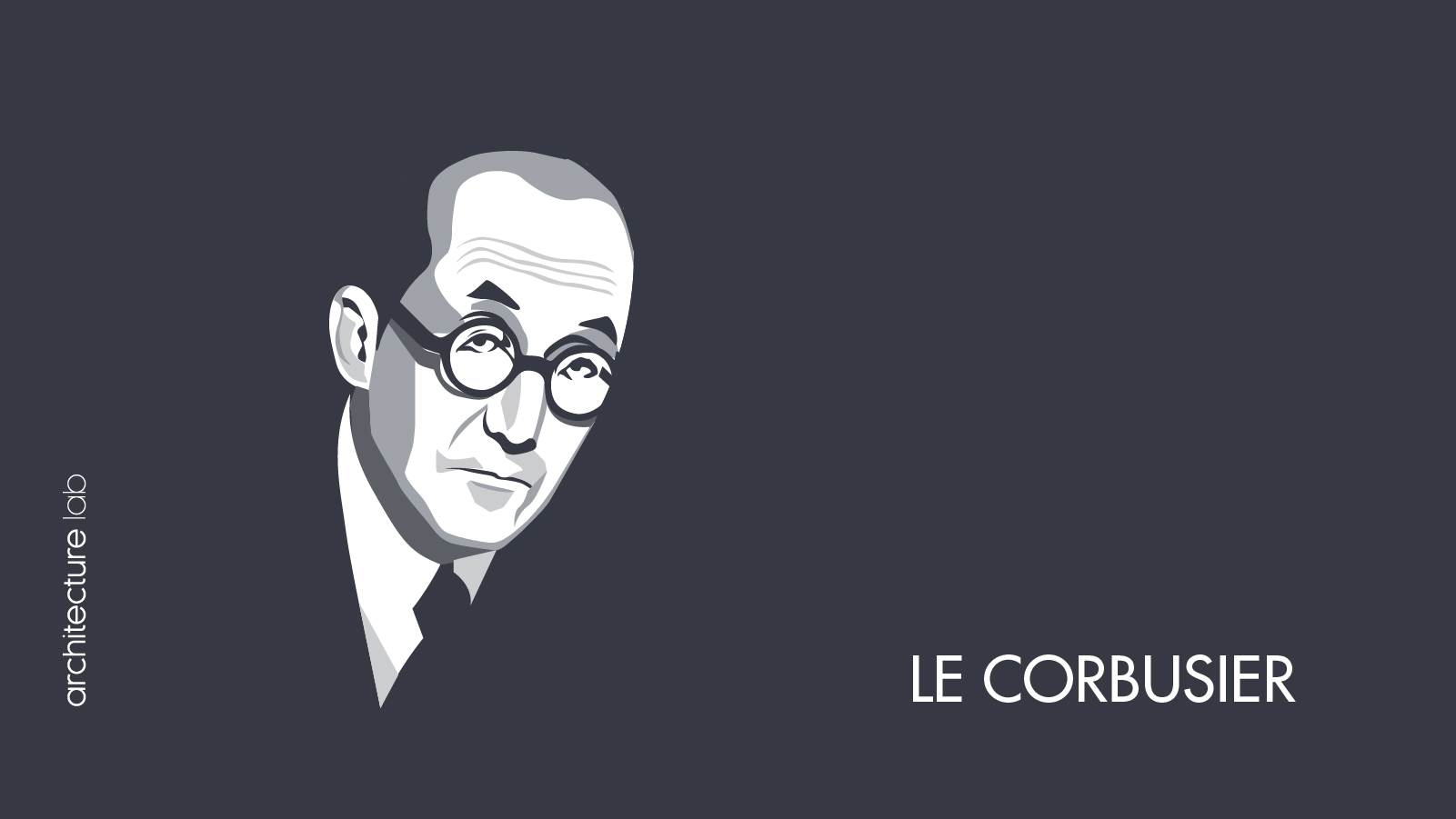
Le Corbusier was self-taught as an architect. He studied decorative arts and engraving in his hometown before undertaking apprenticeships with various architects in Switzerland. From 1907-1911, Le Corbusier traveled widely through Europe, visiting Italy, Austria, Germany, and France to study architecture and art. These formative travels had a significant impact on his architectural philosophy. In 1917, he settled in Paris and began his practice.
Le Corbusier was a leader of the modernist movement in architecture. Simplified geometric forms, open floor plans, large windows, and functionalism characterized his style. Le Corbusier’s most significant European accomplishment was developing a pioneering modern architectural style that transformed building design in the 20th century. His many European projects, like Villa Savoye in France, the Unité d’Habitation in Marseille, and Notre-Dame-du-Haut chapel in Ronchamp, demonstrated his revolutionary approach and rejection of past architectural conventions.
Some of Le Corbusier’s most iconic European buildings include Villa Savoye near Paris (1931), the Salvation Army Cité de Refuge in Paris (1933), Unité d’habitation in Marseille (1952), Notre-Dame-du-Haut chapel in Ronchamp, France (1955), and the National Museum of Western Art in Tokyo (1959). These projects exemplified his five principles of modern architecture and helped spread his radical approach worldwide.
4. Antoni Gaudí
Antoni Gaudí was a known Catalan architect known as the greatest exponent of Catalan Modernism. He was born on June 25, 1852 in Reus, Catalonia, Spain. He studied architecture in Barcelona in the 1870s before starting his practice there in 1878. Gaudí lived and worked exclusively in Catalonia, centered in Barcelona, designing buildings for wealthy patrons. Gaudí devoted the last years to working on the Sagrada Familia church. He died in Barcelona on June 10, 1926, at the age of 73, after being struck by a streetcar.
Gaudí’s architectural style was unique and organic, characterized by bold, irregular shapes, intricate exterior decoration, and extensive use of mosaic tiles and broken ceramics. Gaudí worked primarily in Barcelona, where his fantastical buildings have become iconic landmarks. His masterpiece is the Sagrada Familia church, which combines Gothic and curvilinear Art Nouveau forms.
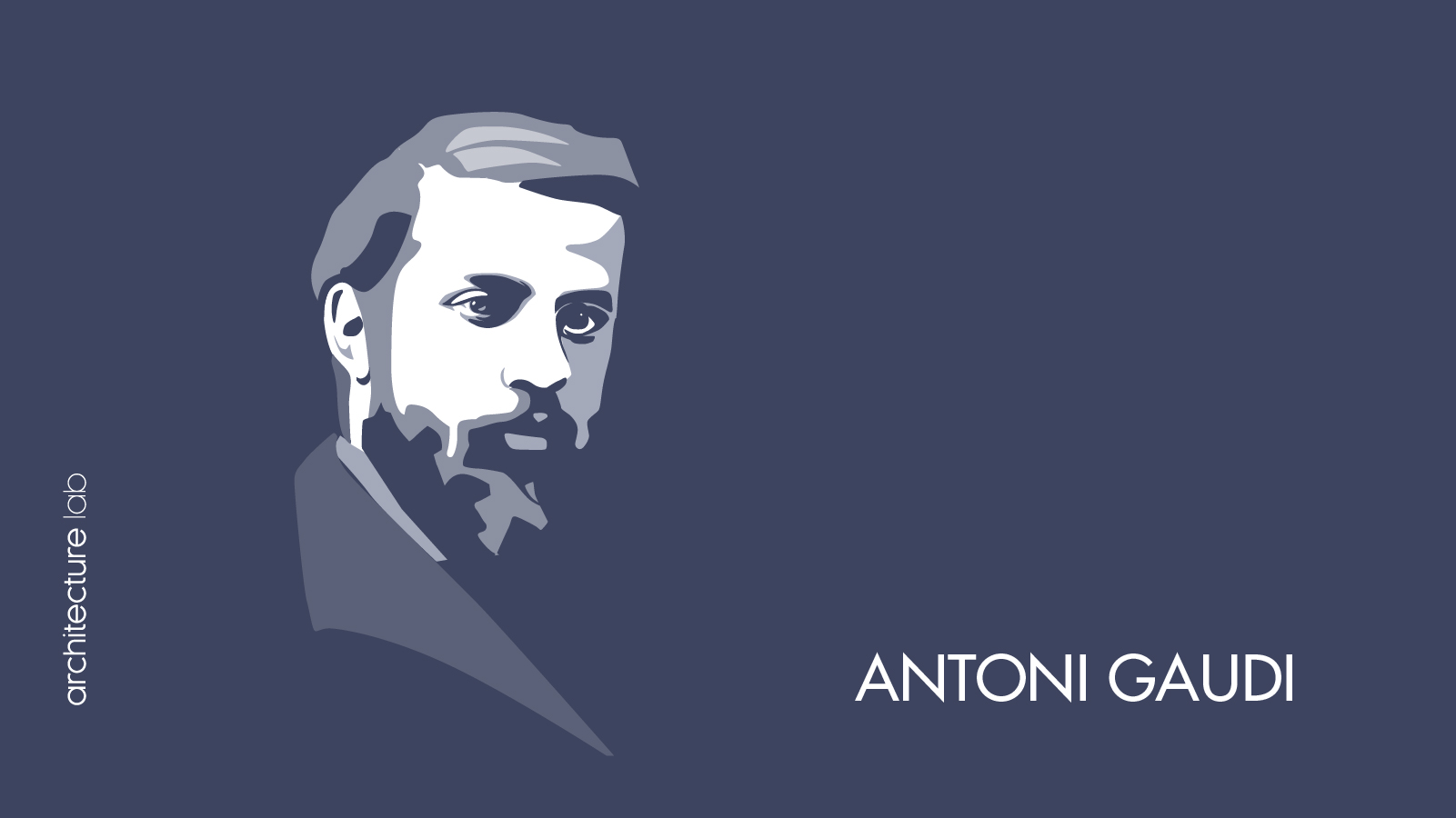
In 1868, Gaudí enrolled in architecture school in Barcelona, where he studied traditional architectural styles. Gaudí also trained as a metalsmith, which influenced his use of ironwork. Nature deeply inspired him, observing plants and animals closely to inform his designs. Gaudí learned construction techniques on the job as he directed his projects. His architecture reflects his lack of formal training with its defiance of conventional forms.
Antoni Gaudí is known for his highly distinctive Catalan Modernist or Art Nouveau style characterized by organic, asymmetric shapes, elaborate ornamentation, and extensive use of mosaic tiles, stained glass, wrought iron, and other crafts. Gaudí’s most significant accomplishment was his work on the iconic Sagrada Familia basilica in Barcelona, which he spent over 40 years constructing.
Some of Gaudí’s most important works include the Casa Milà and Casa Batlló apartment buildings, Park Güell, Palau Güell, and the crypt at Colònia Güell, all located in Barcelona. These demonstrate his brilliant integration of architecture and crafts. The Sagrada Familia basilica is his most famous project, an iconic European landmark that attracts millions of visitors annually.
5. Inigo Jones
Inigo Jones was a pioneering English architect, set designer, and surveyor who introduced classical architecture to Britain in the early 17th century. He was born on July 15, 1573, in Smithfield, London, England. His father was a well-off Welsh cloth worker. Little else is known of his early years. He served as a royal architectural advisor and leader of the King’s Works from 1615 until being displaced in 1643 during the English Civil War. Jones died in London on June 21, 1652, at 78.
Inigo Jones was sent to Italy for several years to study painting and architecture, notably the designs of Andrea Palladio. This exposed him to classical Roman architecture and Renaissance forms, which influenced his later English architecture. Jones did not receive formal architectural training but learned by studying buildings abroad and reading treatises by Vitruvius and others. Inigo Jones introduced a classical architectural style to England that came to be known as Jacobean classicism. His designs were more ordered and symmetrical than previous late medieval styles, drawing on classical Greek and Roman elements like columns and pediments. Jones popularized the Palladian style in Britain with its mathematical proportions. His Banqueting House established Renaissance classicism in England.
Inigo Jones is most celebrated for bringing Italian Renaissance and classical ideals to English architecture for the first time in the early 1600s. His prominent country houses and Covent Garden’s piazza design informed later European urban planning. The Banqueting House he designed in London, among the first Palladian buildings in Britain, remains an influential work of European classicism. Some of Inigo Jones’s important works in Europe include the Queen’s House at Greenwich in London (1616), the Banqueting House at Whitehall Palace (1619-1622), Queen’s Chapel at St James’s Palace (1623-1627), Covent Garden Piazza (1630s), and old St Paul’s Cathedral entrance (1633-1642) which were pioneering English examples of classical style and proportion.
6. Renzo Piano
Renzo Piano is an acclaimed Italian architect known for using materials and forms to create civic spaces filled with light. Considered one of the most talented architects of his generation, Piano has designed significant museums, cultural centers, office towers, and other public buildings across Europe, America, and Asia. Renzo Piano was born on September 14, 1937, in Genoa, Italy, to a family of builders. Piano resides in Paris with his family but works from the Renzo Piano Building Workshop offices in Genoa and New York City. Now in his 80s, he continues to take on major architectural commissions across the globe, traveling regularly to visit project sites and oversee construction.
Renzo Piano formally studied architecture at Milan Polytechnic University from 1959 to 1964, where he explored structural design and construction techniques. Early in his career in the 1960s, Piano worked for acclaimed architects in Philadelphia, London, and Paris to expand his architectural knowledge. Renzo Piano is known for a high-tech modernist architectural style characterized by innovative use of materials like steel, glass, and concrete to create visually striking, light-filled civic spaces.
Renzo Piano’s most celebrated European achievement is the Centre Georges Pompidou design in Paris, built with Richard Rogers in 1977. His best-known works include the Centre Pompidou in Paris, the Shard skyscraper in London, and the Whitney Museum in New York. Piano heads the Renzo Piano Building Workshop, an architectural firm with offices worldwide. His honors include the Pritzker Prize, the AIA Gold Medal, and the RIBA Gold Medal. Some of Renzo Piano’s most famous buildings in Europe are the Pompidou Centre in Paris (1977), Beyeler Foundation Museum in Basel (1997), Potsdamer Platz redevelopment in Berlin (1998), Auditorium Parco della Musica in Rome (2002), New York Times Building in London (2007), The Shard skyscraper in London (2013), and the Academy Museum of Motion Pictures in Los Angeles (2021).
7. Aldo Rossi
Aldo Rossi was an influential Italian architect, theorist, author, artist, and designer who spearheaded the postmodern and neo-rationalist movements. He was born on May 3, 1931, in Milan, Italy. He resided in Milan for nearly his entire life. Rossi died in Milan on September 4, 1997, at 66. During the postwar decades, he produced most of his essential built works, writings, and designs in Milan. Rossi advocated reinvigorating architecture by drawing on typology, or the idea that form follows function. His buildings combined modern and classical elements with stripped-down geometric shapes.
Aldo Rossi received his degree in architecture from the Polytechnic University of Milan in 1959. His education focused on architectural history and theory rather than just technical skills. Rossi was also heavily influenced by his travels to study buildings throughout Italy and his work in architectural journals, which allowed him to write and refine his theoretical ideas on architecture.
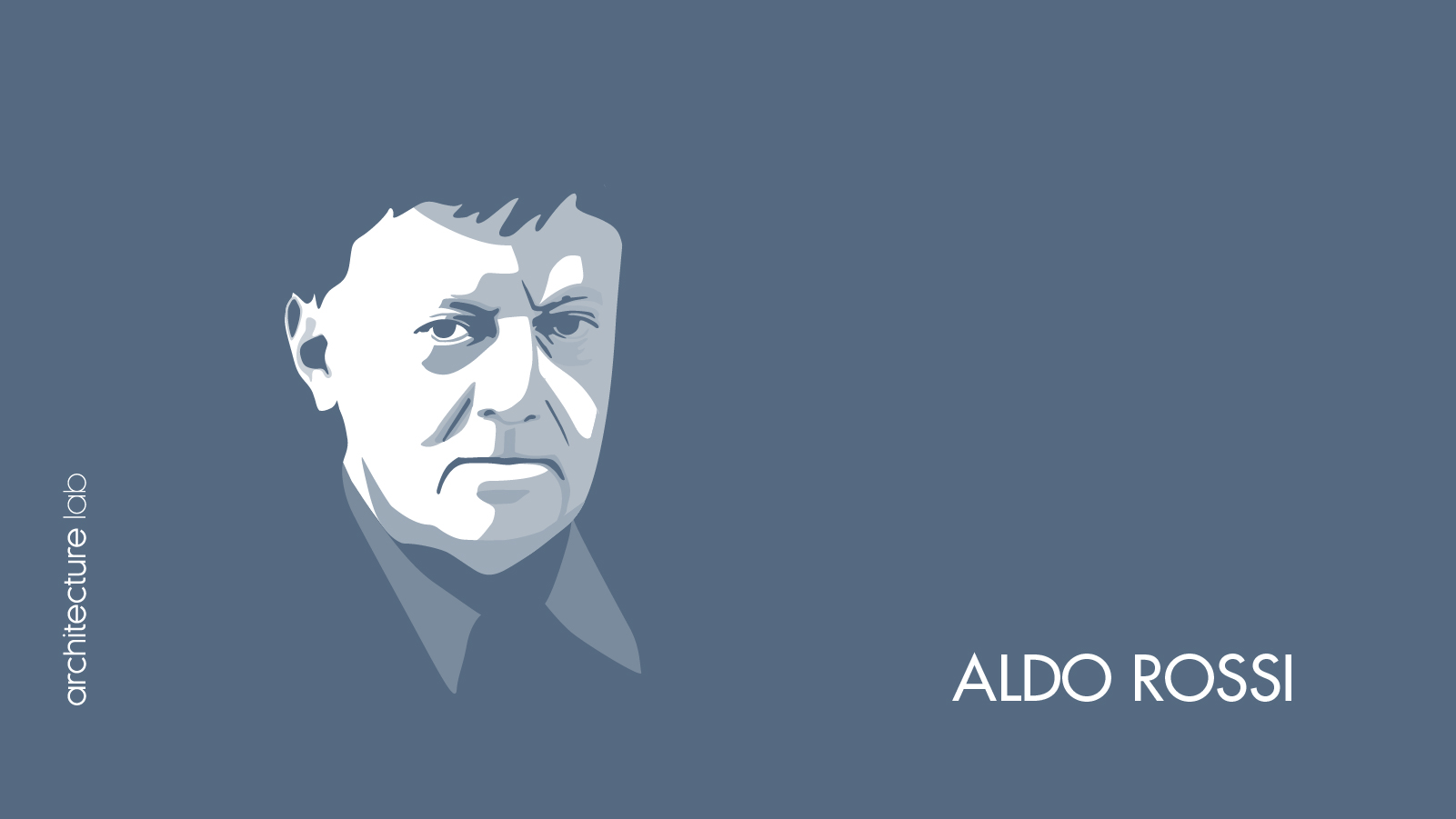
Aldo Rossi is known for his postmodern architecture that revived elements of classical and vernacular styles combined with modernist ideas. His work rejected the functional doctrines of modernism in favor of an architecture of memory and typology, emphasizing form. Rossi’s buildings feature rationalist geometric forms, primary shapes, and repetitive modular elements that evoke the past. His style became known as neo-rationalism.
Aldo Rossi’s most significant European accomplishment was developing a postmodern architectural philosophy that re-examined the role of history and typologies in building design. His writings, such as “The Architecture of the City,” and buildings like the Cemetery of San Cataldo and Gallaratese Housing helped pioneer postmodernism in Europe. Rossi’s ideas renewed interest in typology and the city as an artifact. Some of Aldo Rossi’s most notable buildings in Europe include the Cemetery of San Cataldo in Modena, Italy (1971-1984), the Gallaratese housing complex in Milan (1969-1973), Carlo Felice Theater in Genoa (1979-1991), the Bonnefanten Museum in Maastricht, Netherlands (1995-1998), and the School of Music in Hamburg, Germany (1987-1993).
8. Jean Nouvel
Jean Nouvel is an acclaimed contemporary French architect known for his bold, innovative designs that create unique, context-specific buildings. He was born on August 12, 1945 in Fumel, France. Nouvel has worked out of Paris for his entire career. Now in his late 70s, he actively leads Ateliers Jean Nouvel, which has project offices worldwide. Nouvel has designed significant buildings and developments across Europe, Asia, the Middle East, and North America over the past five decades.
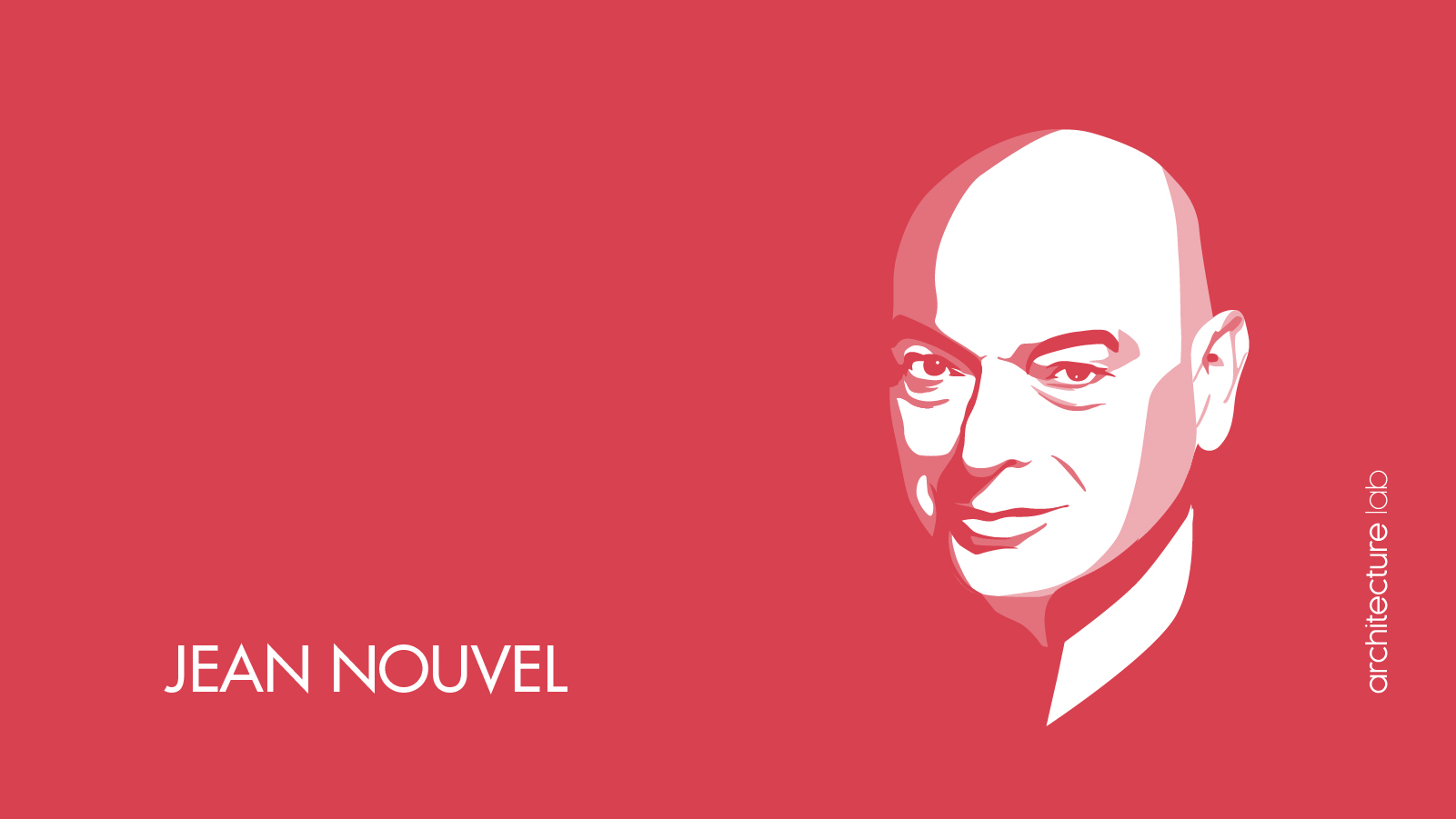
Jean Nouvel first studied at the École des Beaux-Arts in Bordeaux from 1962 to 1966 before transferring to the École des Beaux-Arts in Paris, where he completed his architectural education in 1968. Nouvel spent his formative years training at these primary French architecture schools. The multidisciplinary Beaux-Arts system, emphasizing design and freedom of expression, shaped his experimental approach. Jean Nouvel’s work represents a contemporary contextualist style, where buildings evolve from their surroundings, environment, culture, and unique urban conditions. His designs combine modernism with sensitivity to place. Nouvel integrates interior and exterior so boundaries between building and context disappear.
Jean Nouvel’s most outstanding European achievement is the Institut du Monde Arabe in Paris, completed in 1987. Its southern facade featuring aperture-like mechanical diaphragms to control light symbolized cultural exchange and established Nouvel as a leading architect. Nouvel’s architecture combines modernism with sensitivity to surroundings, local culture, and environment. His projects integrate interior and exterior so seamlessly that building facades become blurred. Nouvel has designed essential museums, cultural centers, hotels, and office buildings across Europe, Asia, the Middle East, and North America. He was awarded the Pritzker Prize in 2008 for his contributions to contemporary architecture. Some of Jean Nouvel’s most famous buildings in Europe include the Arab World Institute (1987) and Quai Branly Museum (2006) in Paris, the Torre Agbar (2005) in Barcelona, the Philharmonie de Paris (2015), the Louvre Abu Dhabi Museum (2017), and the National Museum of Qatar (2019).
9. Rem Koolhaas
Rem Koolhaas is an influential Dutch architect and urban theorist known for his provocative designs and writings. As the founder of OMA (Office for Metropolitan Architecture), Koolhaas creates buildings that often challenge form, function, and societal conventions. His work combines modernism with each unique place’s cultural and historical contexts. Koolhaas first gained fame for his 1975 book “Delirious New York” imagining a modernist city.
Rem Koolhaas was born in Rotterdam, Netherlands on November 17, 1944. Now 78, he continues to lead OMA, which has offices worldwide. Koolhaas resides in Amsterdam with his family but frequently travels for projects and lectures. He remains actively engaged in architectural commissions and urban research. The Netherlands and cities like Rotterdam and Amsterdam have provided context for his early projects and writings. Rem Koolhaas studied at the Architectural Association School of Architecture in London from 1968 to 1972, followed by Cornell University in Ithaca, New York, where he received a master’s degree in architecture in 1975. His education exposed him to avant-garde theory and design, influencing his unconventional approach. Koolhaas would continue to develop his architectural philosophy through traveling, writing, and working on commissions.
Rem Koolhaas’s architectural style combines modernism, avant-garde forms, and sensitivity to cultural context. His buildings often feature radical shapes, spaces, or deconstructed forms. However, Koolhaas rejects having a signature style, instead creating unique designs based on each project’s location and program. His architecture reflects his urban analysis and progressive social ideals. Rem Koolhaas’s most outstanding European achievement was the design of the Netherlands Dance Theater in The Hague, which was completed in 1987. Some of Koolhaas’s most famous buildings in Europe include the Netherlands Dance Theater (1987), Villa dall’Ava in Paris (1991), Euralille master plan in Lille, France (1994), Casa da Música in Porto, Portugal (2005), Prada stores in major cities (2001-2018), and the new Axel Springer media campus in Berlin (2016).
10. Dominique Perrault
Dominique Perrault is an acclaimed contemporary French architect and urban planner known for his innovative and contextual modernist designs. He was born on April 9, 1953 in Clermont-Ferrand, France. Perrault founded his firm, Dominique Perrault Architecture, in Paris in 1981, where he has been based for his entire career. Now in his late 60s, Perrault continues to lead his firm actively and teach architecture. Over the past four decades, he has designed important buildings across Europe, Asia, and the Middle East.
Dominique Perrault received his degree in architecture from the prestigious École des Beaux-Arts in Paris in 1978. He also holds postgraduate degrees in urban planning and history from the École des Ponts ParisTech and the École des Hautes Études en Sciences Sociales, both in Paris. He has since completed many notable cultural and civic projects in Europe and worldwide, including the Olympic Velodrome in Berlin, the extension of the European Court of Justice in Luxembourg, and the Fukoku Tower in Osaka. Perrault is a Professor at the Swiss Federal Institute of Technology and winner of prestigious honors like the European Union Prize for Contemporary Architecture and the Praemium Imperiale.
Dominique Perrault’s most celebrated European achievement is his design for the National Library of France, which was completed in 1995. The project established Perrault’s international reputation. Some of Perrault’s most famous buildings in Europe include the National Library of France in Paris (1989), the Olympic Velodrome and Aquatic Center in Berlin (1992-1999), the extension of the European Court of Justice in Luxembourg (2008-2019), the Vienna DC Towers (2013-2014), and the Pont de Sèvres Towers in Paris (2017-2022).
11. Santiago Calatrava
Santiago Calatrava is an internationally known Spanish architect, structural engineer, sculptor, and artist for his innovative bridges, railway stations, museums, concert halls, and other public structures. Santiago Calatrava was born on July 28, 1951, in Benimàmet, an old municipality near Valencia, Spain. After starting his architecture and engineering firm in Zürich in 1981, he returned to his native Spain in 1989, establishing an office in Valencia. Now in his early 70s, Calatrava resides in Zürich and continues to work globally.
Santiago Calatrava received his first architecture degree from the Polytechnic University of Valencia in 1974. Seeking greater engineering expertise, he enrolled in civil engineering at the Swiss Federal Institute of Technology in Zürich, earning a PhD in 1981. This dual architecture and civil engineering training equipped him to integrate expressive forms with technical innovations in his internationally known buildings.
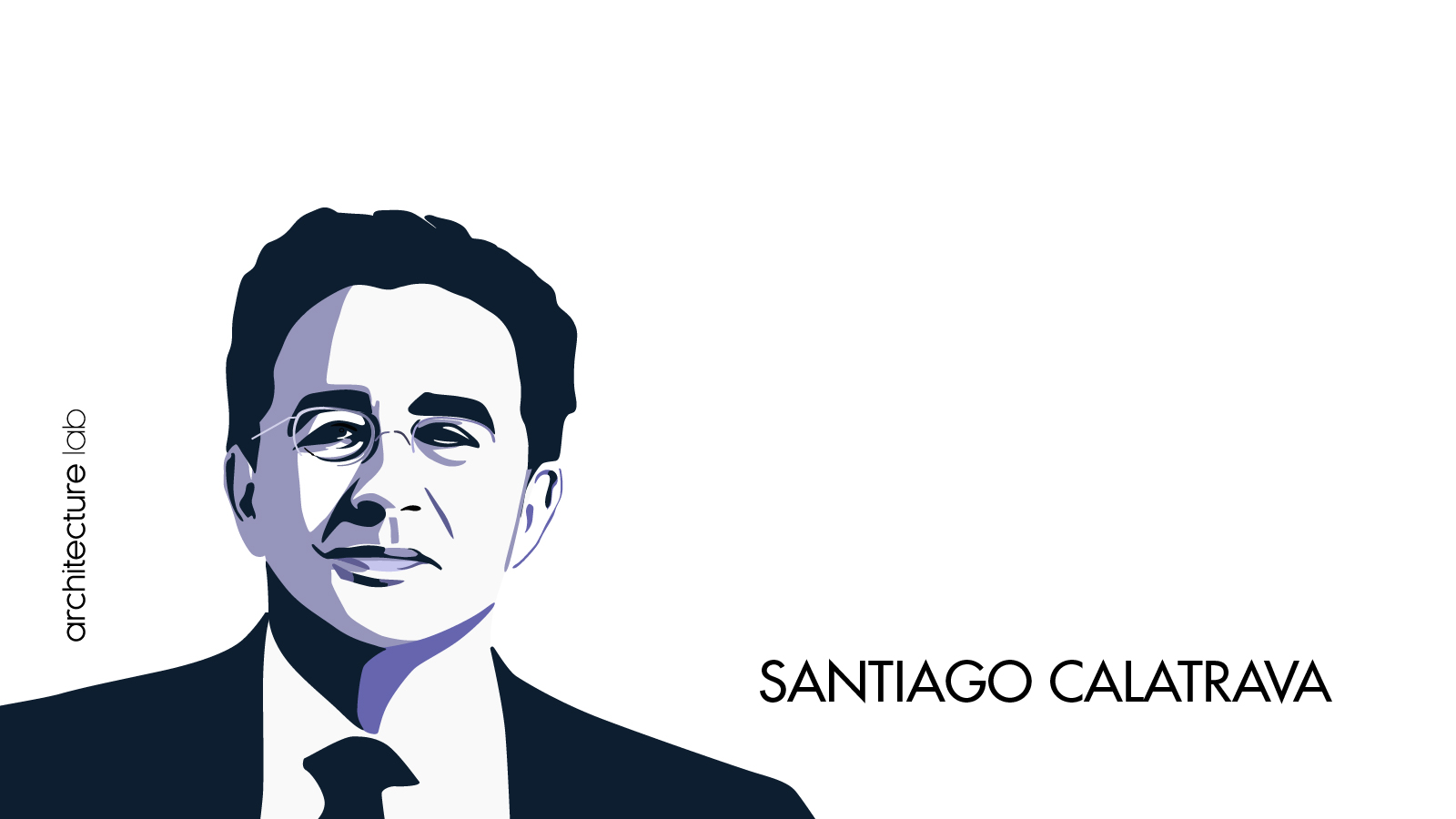
Santiago Calatrava has developed a distinctive style of architecture often categorized as organic, neo-futuristic, or visionary. His designs feature sweeping curves and arches inspired by the human body and natural shapes like birds, fish, or plants. Santiago Calatrava’s most celebrated European project is the City of Arts and Sciences complex, built from 1991-2004 in his hometown of Valencia, Spain. He has received prestigious awards, including the Gold Medal from the Institution of Structural Engineers and the European Union Prize for Contemporary Architecture.
Some of Santiago Calatrava’s most famous works in Europe include the City of Arts and Sciences in Valencia, Spain (1991-2004), the Lyon–Saint Exupéry Airport railway station in France (1989-1994), the Oriente railway station in Lisbon, Portugal (1993-1998), the Athens Olympic Sports Complex in Greece (2002-2004), and the Museum of Tomorrow in Rio de Janeiro, Brazil (2010-2015).
12. Rafael Guastavino
Rafael Guastavino was a pioneering Spanish-American architect and builder who revolutionized architectural design in the late 19th and early 20th centuries through tile vaulting. Rafael Guastavino was born in Valencia, Spain, on March 1, 1842. He lived and worked in New York and Boston for most of his career, designing major projects like Ellis Island, the Cathedral of St. John the Divine, and the Queensboro Bridge. Guastavino died in 1908 in Black Mountain, North Carolina, where he had retired several years earlier.
Rafael Guastavino studied architecture at the Escuela de Arquitectura in Barcelona, Spain, graduating in 1872. His education focused on engineering principles, and he developed innovations in tile vaulting and masonry construction as a student. Guastavino later patented his signature “Guastavino tile” technique after immigrating to America and establishing his architectural firm. Rafael Guastavino pioneered a unique tiled vaulting technique that became a hallmark of Beaux-Arts architecture in America during the late 19th and early 20th centuries. His fireproof tile vaulting enabled the construction of large open interior public spaces and domes, transforming American architectural design. Guastavino merged traditional artisanal craft with modern materials and engineering.
Rafael Guastavino’s architectural career and major works were based in the United States rather than Europe. His great innovation was developing the Guastavino tile vaulting system in America that revolutionized interior spaces there. Guastavino studied and trained as an architect in Barcelona, but his significant projects are outside Europe. His most famous projects include the tiled arches and vaults of Grand Central Terminal, the Boston Public Library, the U.S. Capitol Building, St. Patrick’s Cathedral, Carnegie Hall, and Ellis Island, among many other American landmarks featuring his signature tilework. He still needs to complete major architectural works in Europe.
13. Alvar Aalto
Alvar Aalto was one of the most influential Finnish architects and designers of the 20th century. He is considered a pioneer of modernist architecture due to his innovative use of materials, organic building forms, and sensitivity to natural landscapes. Alvar Aalto was born on February 3, 1898, in Kuortane, Finland. Aalto lived and worked in Finland his entire career, primarily residing and designing buildings in Helsinki and Jyväskylä. He died on May 11, 1976, in Helsinki at age 78. Aalto spent his prolific career creating over 200 built works across Finland and Europe, cementing his legacy as one of the most famous Finnish architects of the 20th century.
Alvar Aalto first studied architecture at the Helsinki University of Technology, where he completed his studies in 1921 after a break to fight in the Finnish War of Independence. Aalto also traveled widely in Europe during the 1920s and 30s, visiting Italy, Germany, and France to expand his architectural knowledge. These formative experiences abroad and his Finnish roots shaped his distinctive modernist approach.
Alvar Aalto pioneered Scandinavian modernism, also known as Nordic modernism. His architecture combined modernist ideals and forms with sensitivity to nature, Finnish culture, and traditional crafts and materials like wood and brick. Alvar Aalto’s most remarkable architectural accomplishment in Europe was the creation of an influential regional modernism that brought international attention to Nordic design. His significant buildings across Scandinavia and broader Europe, especially his museums, libraries, and civic centers, set new standards through their creative use of materials and forms.
Some of Alvar Aalto’s most famous buildings in Europe include the Viipuri Library in Vyborg, Russia (1927-35), Paimio Sanatorium in Finland (1929-33), Villa Mairea in Noormarkku, Finland (1937-39), House of Culture in Helsinki (1955-58), Church of the Three Crosses in Imatra, Finland (1955), and Essen Opera House in Germany (1959-88). These works highlight his inventive merging of modernism and nature.
14. Jørn Utzon
Jørn Utzon was a Danish architect best known for designing the iconic Sydney Opera House in Australia, completed in 1973. Utzon is considered a master of 20th-century modern architecture for his sculptural, nautical-inspired forms. Jørn Utzon was born in Copenhagen, Denmark on April 9, 1918. He studied architecture at the Royal Danish Academy of Fine Arts from 1937 to 1942. Utzon worked in Sweden and Finland in the 1940s before establishing his firm in Copenhagen in 1950. Most of his notable projects were built across Denmark. After withdrawing from the Sydney Opera House project in 1966, he lived on the Spanish island of Majorca for many years. Utzon died in Copenhagen on November 29, 2008, at 90.
Jørn Utzon was a master of modern Danish architecture, creating buildings defined by their sculptural, expressive forms and fluidity. He designed dynamic, curving structures that resembled ships or clouds, influenced by nautical conditions and his childhood near the sea. Utzon merged modernist principles with rich visual expression inspired by nature, especially the interplay of light.
Jørn Utzon’s most celebrated European work is the Sydney Opera House in Australia, which he designed in the late 1950s, bringing him world fame. However, his greatest European accomplishment is his diverse modern buildings across his native Denmark, especially the inspiring Kingo Houses and later Bagsværd Church. Some of Jørn Utzon’s best-known works in Europe include the Kingo Houses in Elsinore, Denmark (1958); Melli Bank in Hammershøj, Denmark (1960); Fredensborg Houses in Fredensborg, Denmark (1963); Bagsværd Church near Copenhagen (1976); and Paustian Furniture Store in Copenhagen (1987).
15. Victor Horta
Victor Horta was a leading Belgian architect and designer considered the father of Art Nouveau architecture. Victor Horta was born in Ghent, Belgium on January 6, 1861. He studied architecture at the Royal Academy of Fine Arts in Ghent before moving to Brussels in 1880. Horta lived in Brussels for the rest of his life, establishing his architecture practice there. Horta designed his famous Art Nouveau townhouses and civic buildings in Brussels from the 1890s to the 1920s. He continued working until his death on September 8, 1947, at 86.
Victor Horta was the leading architect of Art Nouveau architecture, considered the first expression of Modernism. His buildings featured curving, plant-inspired ironwork combined with colorful decoration to create a radically new style in the 1890s. Victor Horta’s most outstanding achievement was developing the Art Nouveau style, which first emerged in his series of four townhouses constructed in Brussels between 1892 and 1901, most famously the Hôtel Tassel and Hôtel Solvay. These buildings featured curving ironwork and whiplash lines and established Horta as the father of Art Nouveau, profoundly influencing European architecture.
Some of Victor Horta’s most iconic works include Hôtel Tassel in Brussels (1892-1893), considered the first Art Nouveau building; Hôtel Solvay in Brussels (1895-1900); Hôtel van Eetvelde in Brussels (1895-1898); Maison & Atelier Horta, his home and studio in Brussels (1898), now the Horta Museum; and the Centre for Fine Arts, Brussels (1922-1928).
Who are the famous European architects in modern times?
Below is the list of the six famous modern European architects:
- Santiago Calatrava: Calatrava is a known European architect who has gained international architectural acclaim for his bold and innovative civic projects, fusing engineering spectacle with neo-futuristic architectural forms. His bridges, railway stations, airports, and cultural venues, like the City of Arts and Sciences in Valencia, display a unique style inspired by human figures, animals, and the natural world. Calatrava’s civic works act as new urban monuments and dynamic public spaces.
- Renzo Piano: Piano is regarded among the foremost European architects of museums and cultural centers worldwide. His buildings, like the Pompidou Centre, the New York Times Building, and The Shard, are known for lightweight forms, transparency, and contextual integration of high-tech modernism. Piano’s museums balance contemporary aesthetics, innovative engineering, energy efficiency, and the creation of uplifting civic spaces filled with natural light. He strives for timelessness and harmony with the urban fabric.
- Jean Nouvel: Nouvel is a European architect who has cultivated an innovative contextual approach to modernism, as seen in works like the Arab World Institute, the Louvre Abu Dhabi, and the Philharmonie de Paris. His buildings forge ingenious syntheses between striking contemporary forms and respect for cultural traditions. Nouvel’s work conveys an institution’s identity and geography through architecture. His bold, curvaceous projects have become anchors for 21st-century cities.
- Herzog & de Meuron: Herzog & de Meuron are European duo architects acclaimed for transformative museums, stadiums, and towers that challenge notions of space, building usage, and materiality. Their Tate Modern converted an old power plant into a light-filled temple for art. At the same time, projects like the Beijing National Stadium (The Bird’s Nest) and the Elbphilharmonie concert hall in Hamburg feature advanced engineering with expressive shapes. Their avant-garde sensibility pushes boundaries.
- Rem Koolhaas: Koolhaas is a European architect who has led the avant-garde by questioning conventions and pioneering a cerebral, perception-altering approach. The Seattle Central Library and Casa de Musica in Portugal feature dynamic shapes and programmatic hybridity. Koolhaas analyzes past models of architecture to invent new forms tailored to contemporary society. His buildings match radical ideas with functional needs.
- Dominique Perrault: Perrault is a prominent European architect with boldly modernist designs like the National Library of France, seamlessly integrated within historic urban fabrics. His work charts a distinctive style of contextual high-tech modernism combined with cultural sensitivity. Projects like the Olympic Velodrome in Berlin demonstrate Perrault’s flair for muscular forms and manipulating natural light as an architectural element. His buildings amplify and transform their settings.
Who are the famous European architects with the most significant influence on modern architecture?
Here is the list of the famous European architects with the most significant influence on modern architecture:
- Mies van der Rohe: Mies was one of the European architects who represented modernist international style architecture that emerged in the 1920s-30s and remains a foundation of architectural thought today. His aesthetic doctrine of “less is more,” and designs defined by structural clarity, premium materials, and open plans became hallmarks of modern skyscrapers and corporate architecture globally. Buildings like the Barcelona Pavilion and Tugendhat House encapsulated these ideals.
- Alvar Aalto: Aalto is a famous European architect who challenged modernism’s rigid doctrines by incorporating natural Finnish forms and materials like wood and brick into projects like Finlandia Hall and Saynatsalo Town Hall. This helped decentralize the movement from its initial Bauhaus locus while lending regional sensitivity, textural warmth, and undulating lines against orthodox modernism’s devotion to glass, steel, and right angles.
- Jørn Utzon: Utzon is one of the famous European architects who captured the world’s attention through the iconic Sydney Opera House, which became one of the most recognizable buildings of the 20th century. Its soaring white vaulted sails introduced original expression and structural innovation to cultural architecture amidst corporate modernism’s growing global uniformity. It reflected sensitivity to context.
- Ralph Erskine: Erskine is a European architect who helped progress modernist housing projects across Scandinavia and Europe by designing livable, human-scale communities like Byker Wall in Newcastle. While deeply functionalist, his unique sensibilities toward amenities, brick cladding, and sensitivity to inhabitants and community distinguished his works internationally from housing as mere machine architecture.
- Aldo Rossi: European architect Rossi repositioned modernism to reconnect it with collective meaning, memory, and architectural archetypes from history while retaining abstraction. Seminal projects like the Modena Cemetery and Teatro del Mondo rebuilt modernism’s engagement with city contexts, typological associations, and essential forms underlying buildings.
- Pier Luigi Nervi: European architect Nervi innovated architectural concrete construction methods seen internationally through landmark structures like the UNESCO headquarters and Rome’s Tour de la Nef Olympic stadium. His understanding of reinforced concrete allowed for more remarkable plasticity and structural daring, while the expressive materiality inspired architects.
What are the most famous architectural wonders in Europe?
The most famous architectural wonders in Europe are St. Peter’s Basilica in Vatican City, Neuschwanstein Castle in Germany, Sagrada Família in Barcelona, The Eiffel Tower in Paris, The Colosseum in Rome and the Acropolis of Athens. Firstly, St. Peter’s Basilica in Vatican City is the most known work of Renaissance architecture and the largest church in the world. It took over 100 years to construct, from 1506 to 1626. He was designed by Donato Bramante, Michelangelo, Carlo Maderno, and Gian Lorenzo Bernini, among others. Secondly, Neuschwanstein Castle in Germany is a fairytale 19th-century castle built by King Ludwig II and built 1869-1886 in the Romanesque Revival style, incorporating the latest technology like flushing toilets. Never fully completed. Thirdly, Sagrada Família in Barcelona Gaudi’s unfinished Art Nouveau-style Roman Catholic basilica has been under construction since 1882. Still, at least 15-20 years from completion. Thirdly, The Eiffel Tower in Paris, constructed for the 1889 World’s Fair, was over 1,000 feet tall. It was the world’s tallest structure for decades. It is the most-visited paid monument in the world, with over 7 million visitors per year. Sparkles at night with 20,000 light bulbs. Fourth, The Colosseum in Rome that could hold 50,000-80,000 spectators. It had a retractable fabric canopy to shelter crowds—complex underground staging areas and corridors. Lastly, the Acropolis of Athens is an Ancient 5th century BC citadel with classical Greek temples like the iconic Parthenon. He is regarded as the supreme architectural achievement of classical Greece.
What are the most known architectural firms in Europe?
The most well-known architectural firm in Europe is Foster + Partners, founded by British architect Sir Norman Foster. It has redefined skylines with iconic high-tech buildings like The Gherkin in London while advancing sustainable development goals. Secondly, The Swiss team of Herzog & de Meuron has produced provocative museums like the Tate Modern, forging new spatial experiences through advanced materials and forms. Thirdly, Norway’s Snøhetta redefines cultural and civic architecture by foregrounding sensitivity to natural landscapes, as seen in the striking Bibliotheca Alexandrina and Oslo Opera House. Finally, the Bjarke Ingels Group, led by Danish architect Bjarke Ingels, has brought exuberant creativity to European projects through buildings like the Lego House, pioneering novel solutions for ecology and communal spaces tailored to surrounding communities.
What is the architecture body in Europe?
Here is a list of significant European architecture bodies:
- The European Forum for Architectural Policies: EFAP was founded in 1997 as an informal think tank to promote discussion and exchange on architectural policies across the European Union. EFAP operated under the umbrella of the Council of Europe’s Cultural Policy Platform. The organization received funding through membership fees paid by participating countries and institutions, government grants, and private sponsors.
- The European Association for Architectural Education: EAAE was established in 1975 as a non-profit organization intended to represent, promote, and develop architectural education across Europe. The organization is funded through membership fees paid by participating schools, project sponsorship, and grants from bodies such as the European Union. It has enjoyed ongoing support from the European Commission since 2002.
- The European Architectural History Network: EAHN is an international association founded in 2005 to foster communication between individual scholars and representatives from European architectural associations and orders. The EAHN is funded by conference registration fees, independent scholarships offered by supporters, and grants from institutions like the Getty Foundation.
What is the most famous architectural style in Europe?
The most popular architectural style in Europe is Neoclassical architecture. Neoclassical architecture emerged in the mid-18th century as a revival of classical Greek and Roman architectural forms and principles. Symmetry, columns, pediments, domes, arches, and a formal grandeur characterize it. This style was widely used across Europe and its colonies for significant civic, institutional, and residential buildings. Famous examples of Neoclassical architecture in Europe include the Panthéon and Arc de Triomphe in Paris, the British Museum in London, the Reichstag in Berlin, and the Hermitage in St Petersburg. Neoclassical became the dominant style for churches, banks, museums, government buildings, and estates during the 18th and 19th centuries.
What are the most used house-building materials in Europe?
The most commonly used house-building materials in Europe are brick, stone, and wood. Brick is durable, fire-resistant, and easy to work with. Brick is a prevalent choice across Europe for constructing homes. It is used extensively in countries like the UK. Natural stone, widely available in many areas of Europe, is also commonly used for building houses, especially in regions with large deposits. It is more prevalent in Central/Southern Europe. Wood/Timber In northern European areas with abundant forests, wood is a primary home-building material valued for insulation.
Do building materials affect the payment of an architect?
Yes, the building materials an architect specifies can sometimes affect their payment, but there are other factors besides this. Most residential architects charge fees based on a percentage of total construction costs. More expensive materials like premium finishes will raise the overall budget and the architect’s percentage fee. However, an architect’s compensation is primarily determined by the size and complexity of the home design rather than the material cost. Their fee reflects overall services like producing drawings, submitting permits, and constructing administration. An architect may try to steer clients toward higher-end materials that raise their percentage fee, but ethical architects act in the client’s best interest regardless of the materials selected. Material costs are a more prominent factor for contractors who earn profit fr.
How much is the salary of an architect in Europe?
The average architect salary in Europe is between $32,000-$48,000 (€30,000-€45,000, £26,000-£38,000) per year, while senior architects make $59,000-$96,000 (€55,000-€90,000, £47,000-£77,000). Architects in major cities like Paris, London, and Milan earn 10-20% above national averages. Western European nations generally pay architects higher salaries than Central/Eastern European countries. But the cost of living is also higher in Western Europe, so purchasing power varies.
What European states have the highest wages in Europe?
The European states with the highest average salaries are Switzerland, Luxembourg, Denmark, Iceland, and Norway. Switzerland has the highest average wages in Europe, with average monthly earnings of over $6,000 (€5,500, £4,800). Switzerland’s thriving finance, pharmaceutical, and engineering sectors contribute to high wages. Luxembourg comes second, with average monthly salaries over $5,000 (€4,600, £4,000). It has a robust financial services industry and one of the highest GDP per capita rates globally. Denmark has an average monthly salary of around $4,500 (€4,100, £3,600). It offers high wages, progressive taxes, and generous social benefits. Strong oil, shipping, and renewable energy industries boost salaries. Iceland has a small population, high costs of living, and prosperous geothermal and tourism sectors that enable high incomes with average monthly earnings of $4,500 (€4,100, £3,600). Norway’s average monthly payments are over $4,000 (€3,700, £3,200), supported by offshore gas and oil production and high taxes that fund substantial social welfare programs.
Explore Famous European Architects
Find below our top guides about Famous European Architects.

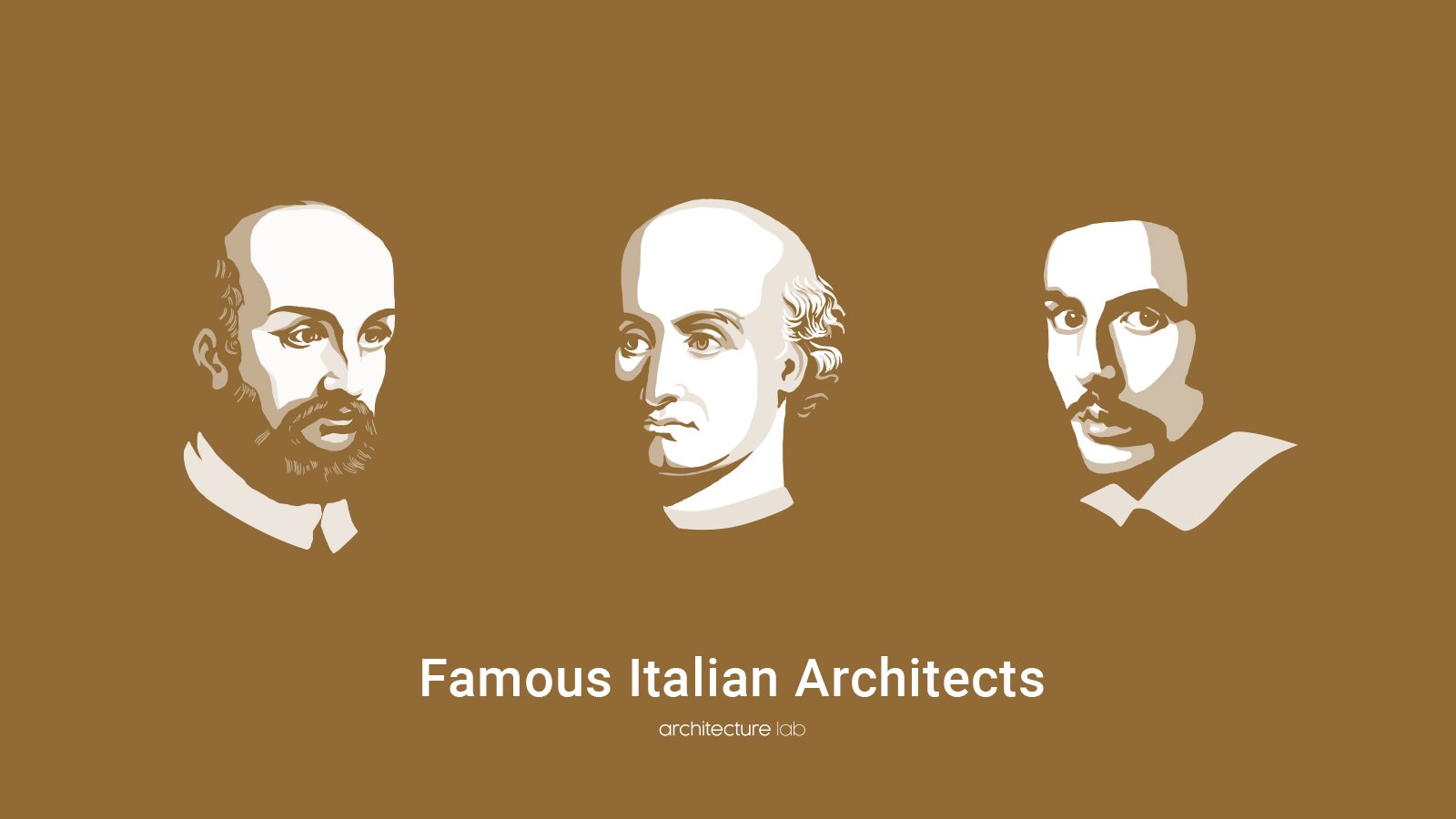
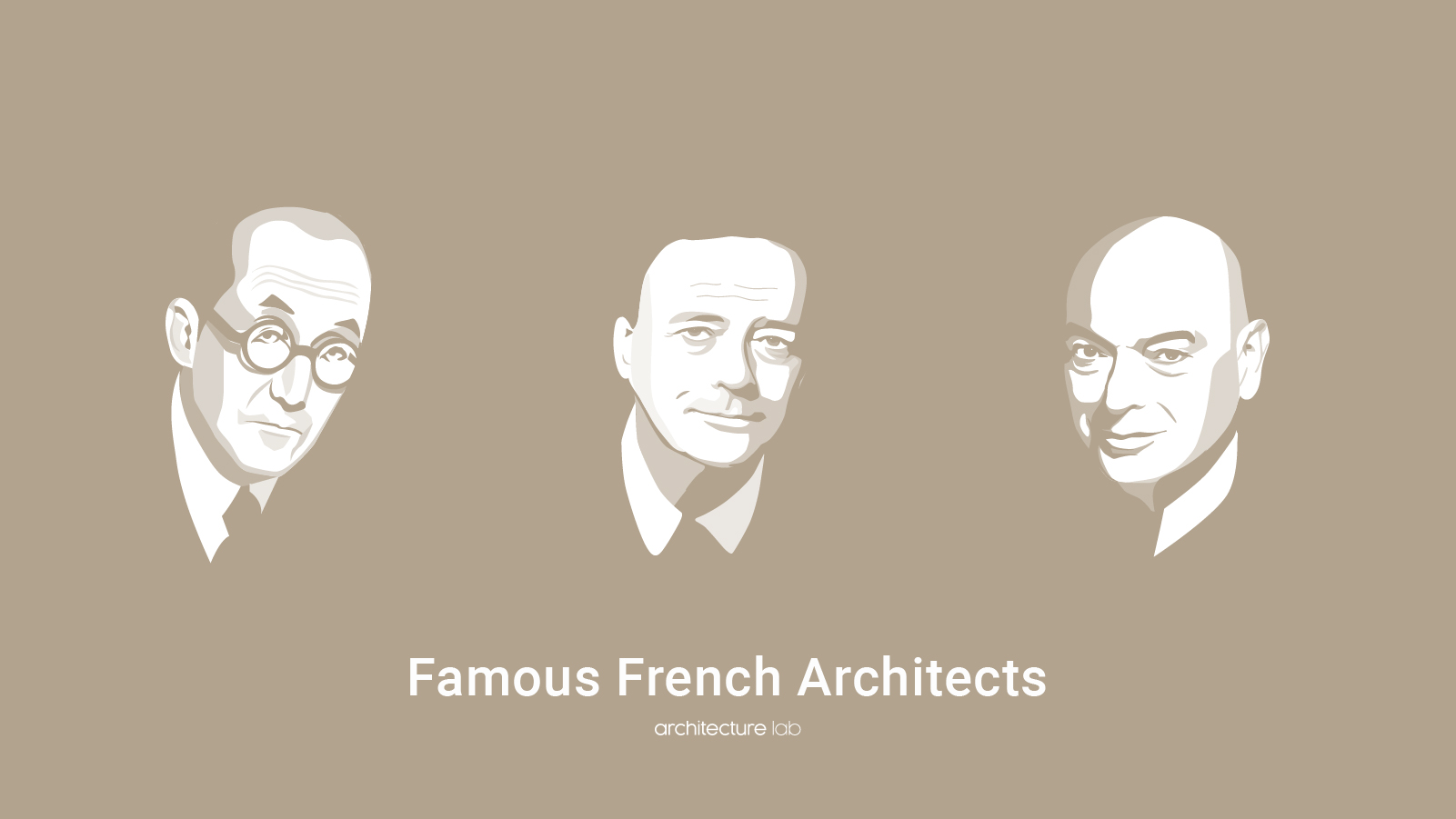
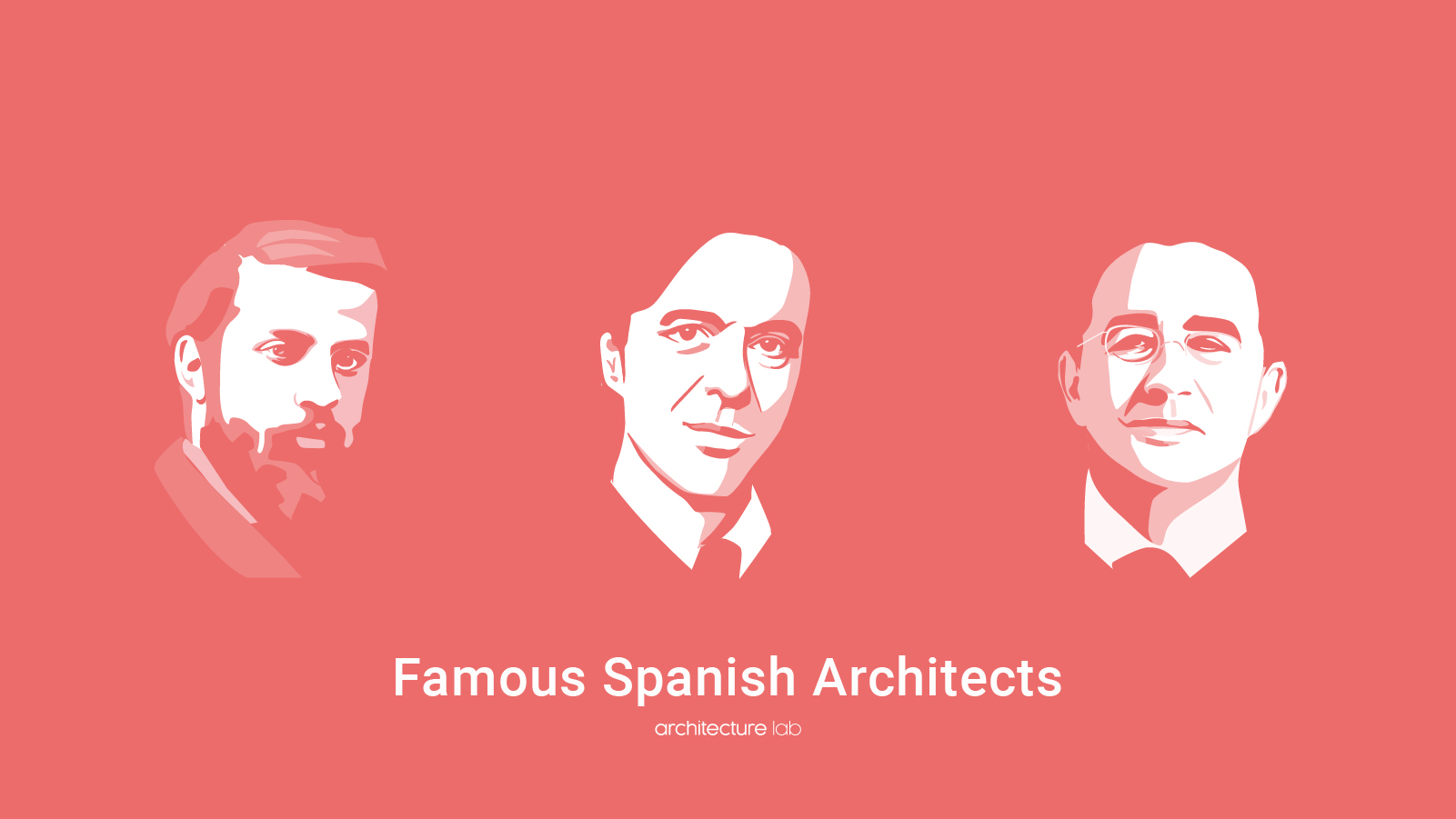
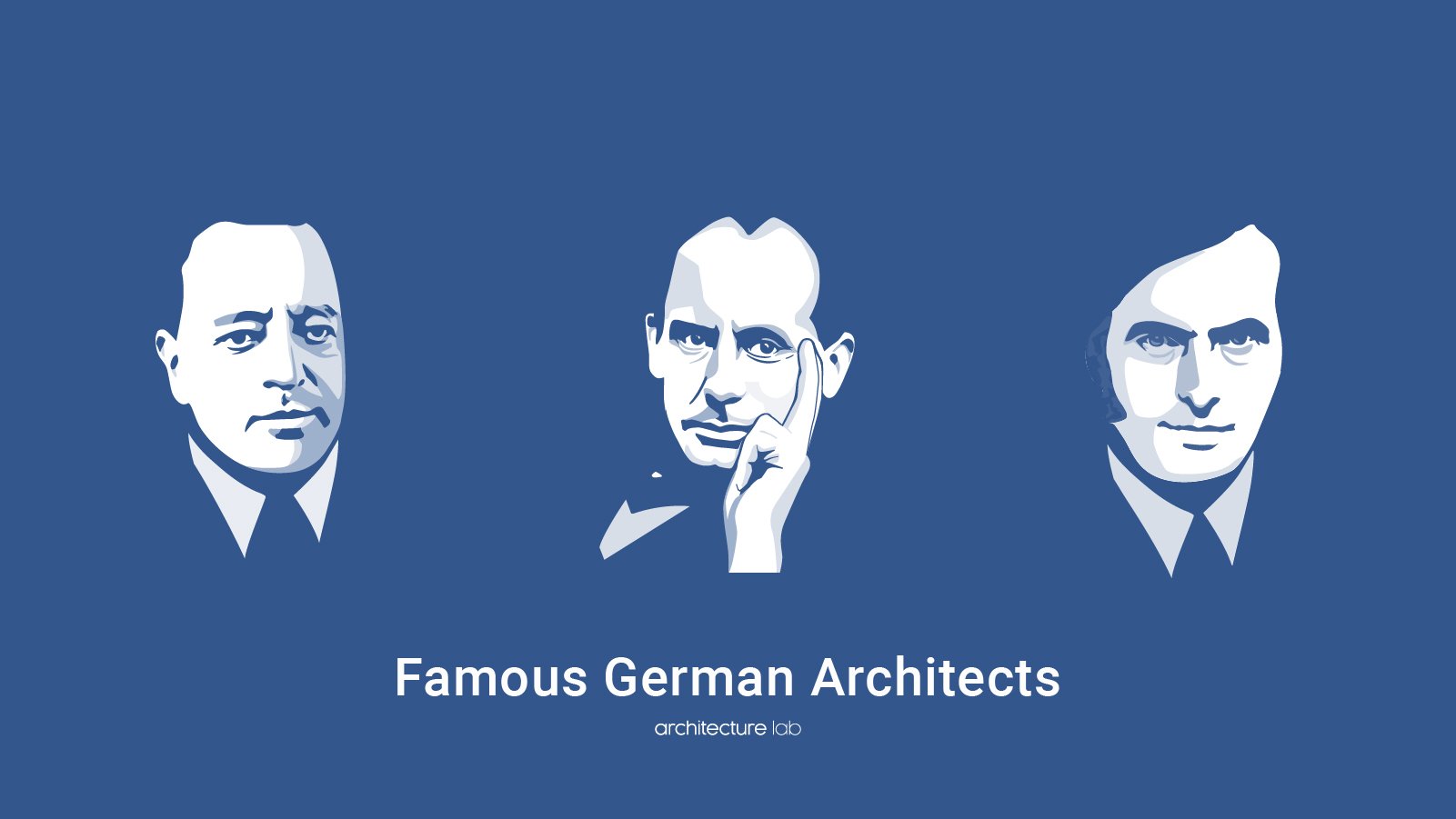


What about Rietveld?